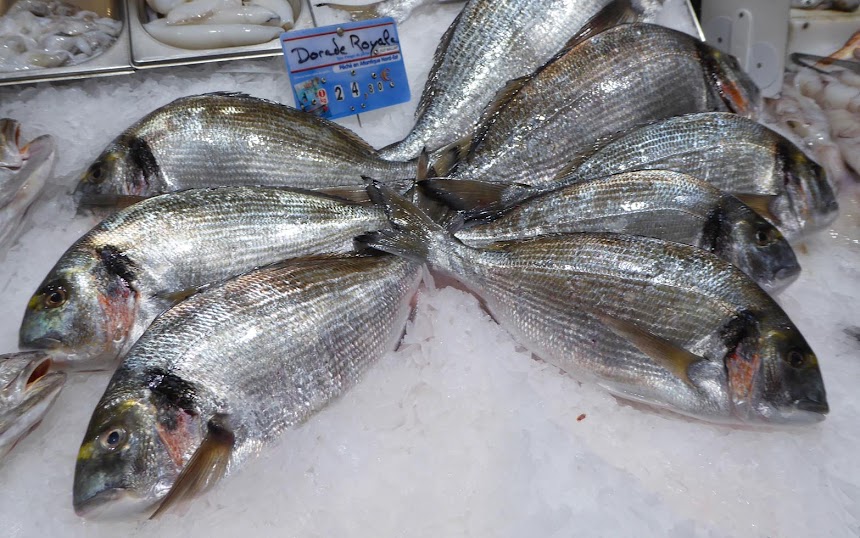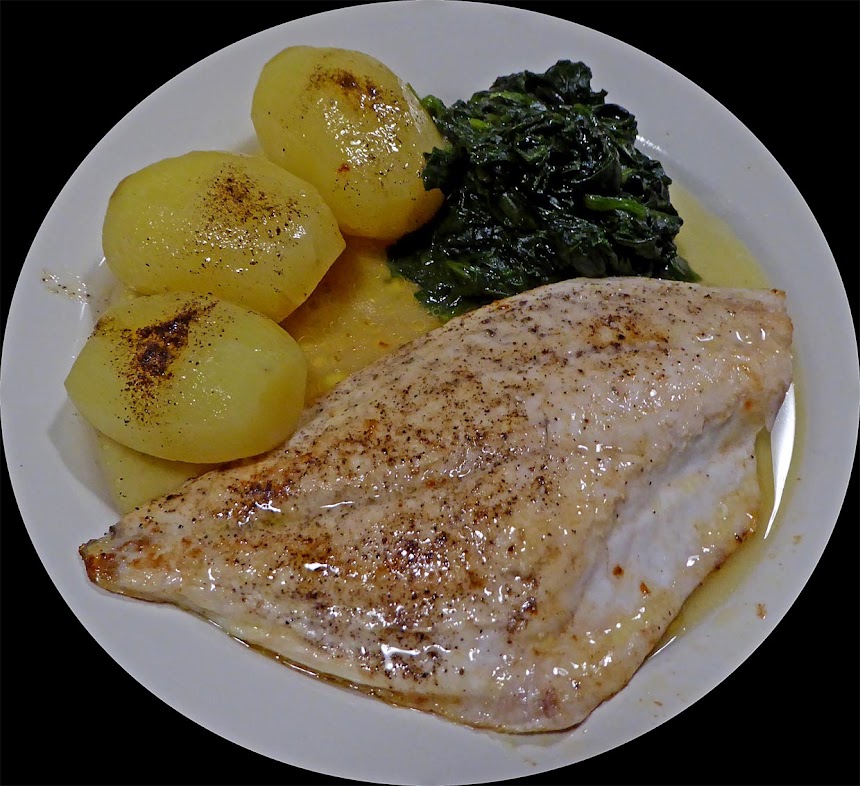Walt posted a few photos of the gîte (vacation rental, pronounced "zheet") we stayed in last week over toward the Atlantic coast in the area called La Vendée. The first thing I did when we arrived there on that Saturday afternoon was to take some photos, before we messed the place up with everything we had hauled over there in the trunk of the Citroën. One exception: this first photo shows the kitchen in mid-week, after we had moved in. I took it from the top of the stairs that lead up to two bedrooms and the bathroom. That red cord snaking across the floor is an ethernet cable (see below). The door on the lower right opens into a half bath.
So the downstairs floor of the gîte, which is called La Petite Maison, consists of a large kitchen (about 200 square feet), a small WC (or half bath), and a large living room (350 square feet). The house has a front door leading into the living room, and a back door that opens into the kitchen. The price of a gîte like this one is 300 euros for seven nights, including a 40 euro cleaning fee that is optional but which we chose to pay, to avoid having to spend time cleaning the place ourselves before we left. In the living room there was a big flat-screen TV connected to a basic satellite TV service carrying all the standard French channels as well as some English language channels including Sky News and CNN-London. We discovered that some American movies on some channels were available with an English-language soundtrack (version originale, it's called — not dubbed into French).
Much of the furniture and kitchen equipment in the gîte came from Ikea, it seemed. I'm not even sure where the closest Ikea store is — in La Rochelle, maybe, which is an hour's drive south. The gîte's renovation dates back to 2006. All the furniture downstairs was comfortable, and the kitchen was completely functional. I liked the way the place was decorated, in a fairly plain style. It was spacious and not too fancy. I was glad to see that the staircase wasn't an open-tread model. That meant that Natasha was not afraid of running up and down from one floor to another.
We used the stove, refrigerator, freezer, and dishwasher while we were there. We were preparing all our own meals because we didn't want to go to restaurants with the dog. We packed a cooler and took a lot of our food with us from home. It just needed reheating, and we bought fish and some other things locally that were simple to prepare. French gîtes ruraux are really just a step up from camping in some ways. You don't expect all the comforts of home, but you want a place that's serviceable and reasonably comfortable. This one was fairly luxurious by gîte standards. There was plenty of hot water, and there was even a washing machine (un lave-linge) but we didn't need to use it. We also didn't need to turn on the heat during our stay because the weather was on the warm side.
We had some trouble with the internet connection, which ran off a PLC (power-line communication) unit plugged into an electrical outlet in the living room and connected us us to the gîte owner's modem/router, in a separate building, through the property's electrical wiring. It provided wi-fi but the signal it delivered was fairly weak and flaky, and it completely failed on the second day. Then the owner got it working again, and he also provided an ethernet cable that let us connect our laptop computer to a dedicated ethernet port in the gîte's kitchen. That limited where we could place and use the laptop, and our tablets can't connect via ethernet so we couldn't use them that day. I had wanted to set the laptop up on the table below, in the living room, but the ethernet cable wasn't long enough to reach all the way there from the kitchen.
First world problems, eh? I finally realized that if I plugged the PLC unit in upstairs in the hallway, directly above the coffee table downstairs, the wi-fi signal was much stronger than when it was plugged into an outlet in the living room. The living room ceiling was the upstairs floor. In other words, there was no insulation or brick or tile separating the downstairs from the upstairs, and the signal had no trouble passing through wooden floorboards. When I figured that out, the wi-fi mostly worked pretty well for us the rest of the time. Overall, the gîte was a good place for us, considering the price. I'll post about the bedrooms and bathroom over the coming days, just to give you an idea of what the place was like.


















































